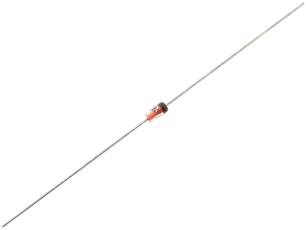A diac (Diode for Alternating Current) is a bidirectional semiconductor device primarily used to trigger triacs. It consists of two PN junctions connected in series and has two equivalent terminals, allowing it to conduct current in both directions once a specific breakover voltage is reached, typically around 30 volts.
The diac remains non-conductive until the voltage across it exceeds this threshold. At that point, a sudden breakdown occurs, and the device starts conducting. When the current later falls below the holding current, the diac returns to its non-conductive state.
Diacs are commonly used in triggering circuits for triacs, such as in dimmers, phase control, and pulse generators where a defined and symmetrical triggering point is required.
A diac (Diode for Alternating Current) is a bidirectional semiconductor device primarily used to trigger triacs. It consists of two PN junctions connected in series and has two equivalent terminals, allowing it to conduct current in both directions once a specific breakover voltage is reached, typically around 30 volts.
The diac remains non-conductive until the voltage across it exceeds this threshold. At that point, a sudden breakdown occurs, and the device starts conducting. When the current later falls below the holding current, the diac returns to its non-conductive state.
Diacs are commonly used in triggering circuits for triacs, such as in dimmers, phase control, and pulse generators where a defined and symmetrical triggering point is required.




